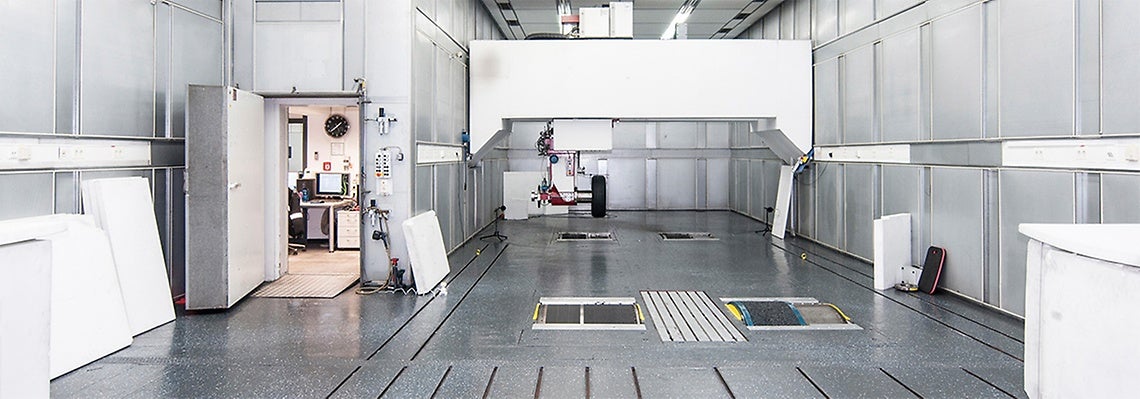
Noise, vibration and harshness

How can tyre road noise be reduced? Finding this out is the job of the team working in the Noise, Vibration & Harshness (NVH) Lab. Tyres are responsible for around 50% of the noise produced when driving. The ideal “silent” tyre is a heavy and smooth slick. In wet conditions, however, this type of tyre performs very poorly in other criteria compared to a well balanced summer or winter tyre.
Tyres are responsible for around 50% of the noise produced when driving.

How testing is carried out
The tyres run at different speeds on various road surfaces in an anechoic chamber while highly sensitive microphones record the noise generated. The contact pressure between the tyre and the surface it is running over can be varied in order to simulate different vehicle weights.
Special software is then used to analyse two aspects of the tyre’s NVH performance:
1. The road surface-dependent rolling noise emitted directly by the tyre into the environment. Here, the analysis checks whether the tyre noise meets or even falls below the statutory noise protection limits (EU tyre label).
2. How well does the tyre absorb vibrations without transmitting them into the vehicle interior via the body? NVH Lab staff work closely with the tread designers and are consulted as soon as it is time to evaluate the initial versions of a new design. However, noise performance is affected by other aspects too: the properties of the tyre casing, the sidewall, the density of the material and the tyre’s weight.
Besides calculating quantitative noise levels, the NVH Lab is also responsible for sound design. Indeed, it is not just the volume of a noise that determines whether it is perceived as obtrusive, but also the nature of the sound it makes.
Electric mobility enters the limelight
Tyres for electric vehicles account for a steadily increasing proportion of noise tests. Such tyres must have exceptionally low rolling resistance along with a lightweight design in order to increase vehicle range. The NVH Lab provides insights into how to resolve possible conflicting goals in the product development process.

Sound design around the world
Besides calculating quantitative noise levels, the NVH Lab is also responsible for sound design. Indeed, it is not just the volume of a noise that determines whether it is perceived as obtrusive, but also the nature of the sound it makes. One well known example of this is the distinctive “howling” sound made by truck tyres at certain speeds and on particular road surfaces. The sound designers also manage to transform the higher levels of noise from winter tyres into a more pleasant sound.
Since sound is perceived very differently from one continent to the next, tyre noise is customised for the markets in Asia and North and South America. So, not only does the NVH Lab interface with the other R&D departments at Continental, it also actively addresses customer wishes brought to its attention by marketing and sales teams around the world.
Related articles
-
 2023/05/18X-ray and CT tyre analysisRead more
2023/05/18X-ray and CT tyre analysisRead more -
 2023/05/18Durability and wearRead more
2023/05/18Durability and wearRead more -
 2023/05/18Destructive tyre analysisRead more
2023/05/18Destructive tyre analysisRead more